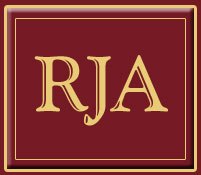“We have to get used to the idea that at the most important crossroads in our life there are no signs.” ~Ernest Hemingway
Last year the National Academy of Public Administration reported that “Over the next decade, all sectors of society must work together to address the critical issues of protecting and advancing democracy, strengthening social and economic development, ensuring environmental sustainability, and managing technological changes.” They go on to stress that this will require all levels of government to “improve their operations so that they can tackle problems in new ways and earn the public’s trust.” This necessitates building a highly-skilled, agile, and responsive public sector workforce.
Unfortunately, despite numerous attempts at building such a workforce, developing new management strategies and allocating time and resources to solve problems like poverty, discrimination, homelessness, and crime, they not only persist, they have worsened. Covid-19 is here to stay; ideological differences and political polarization threaten our democracy; racial tensions endure; incivility seems to be the new norm; and marginalization engenders frustration, anger, misunderstanding, distrust, inequities, and social unrest. According to Professor Gerald Caiden, in The Civilizing Mission of Public Administration” citizens are, “Convinced that government is more of a problem than a solution; that the public sector without the pressure of market forces is somewhat parasitic; and that public servants are excessively bureaucratic, incompetent, wasteful, unproductive and inefficient.” I happen to disagree with this widely held perception. The reality is there are many people who pursue public sector careers because of their passion for making a difference in the lives of others and the betterment of society. Money alone, although desirable, is never enough. Unfortunately, somewhere along the way their passion gets buried in the bureaucratic culture and “the spark goes out without becoming the flame.”
If government ever hopes to attract young, intelligent dreamers desirous of making a difference in the lives of people, it needs to invigorate the organization’s culture, tackle the malaise, and change the toxic perception people have of public service and public employees by building trusting, transparent relationships with communities, youth, students, seniors, and residents and other stakeholders. The timing for doing so may be perfect. As we emerge from this lingering pandemic, the public sector is experiencing increased retirements and turnover; increased workload demands, hybrid work schedules, technological innovations and greater transparency because of social media. There now is available a better educated and more diverse candidate pool to select from, train and develop. However, progressive leadership, reenergized public sector culture, adequate time and resources, and greater community engagement are pre-requisites for success.
Hollie Russon Gilman, in techcrunch.com, April 2018, believes that millennials could be the answer. Add to Millenials, Gen Z and we have an untapped resource of women and men for whom “meaning” is a huge driver for them. Millennials seem to want their job to be meaningful and to work for an organization they can respect. Pay, prestige, and job security are not all that matters to them. Mintzberg et al, 1998:23 report “60% of millennials said, a ‘sense of purpose’ is part of the reason they chose to work for their company.” Music to my ears!
Nonetheless, there is a growing number of skeptics, including politicians and past U.S. presidents, who believe the solution to public sector malaise is less government and more privatization. In their opinion, the private sector can do the work better, cheaper, and more efficiently. The private sector will reduce, if not, eliminate bureaucratic red tape; implement strategic planning and performance management; and base job security and promotions strictly on merit. Unfortunately, solely imposing the private sector model on the public sector has proven to be misguided, ineffective, ill-suited for serving a socio-economically diverse citizenry; and may clash with the public sector’s vision, mission, values, and even code of ethics. Professor Caiden has found, if left unchecked, privatization can result in malfeasance (unlawful acts), nonfeasance (failure to act) and misfeasance (unethical acts). This does not preclude the possibility of partnering with the private sector and NGOs to deliver services expeditiously, effectively and efficiently.
We are at an important crossroad in public administration. We need to determine better ways to fulfill government’s responsibility for:
· Enacting laws that embrace the principle of the “rule of law” and are equally and fairly enforced;
· Maintaining order and security for all while ensuring public safety and protecting citizens’ human rights;
· Promoting the general welfare and well-being of all citizens;
· Protecting the environment and improving the quality of life for future generations.
No matter what means government takes to achieve this end, it will be subjected to criticism. Politicians need fodder to get elected and/or stay in office; mainstream media needs hyperbole to flourish; employees need to be recognized and rewarded for their services; labor needs something to challenge management; and taxpayers need a reason to complain. More and more we see a beleaguered profession vilified, undervalued and burned out. Why isn’t the public sector viewed as a calling to the highest service where one can learn, grow, develop, make a difference, and contribute to a better quality of life for everyone?
The public sector has an opportunity to change the paradigm to one of Openness, Compassion, Respect, Understanding, Critical Thinking, and Agility. I believe this will go a long way to change the negative bureaucratic perception and distrust the public has of public servants. Why did I choose these six qualities? Let me briefly explain my reasoning.
· Openness is one of the five personality trains of the Big Five personality theory. It indicates how open-minded a person is. “They are imaginative, curious, and open minded. Individuals who are low in openness to experience would rather not try things. They are close-minded, literal and enjoy having a routine.”
· Compassion is when you relate TO someone’s situation and you want to help them. You see someone in trouble, and you feel like pitching in. “Whereas empathy is a feeling of awareness toward other people’s emotions and an attempt to understand how they feel.” It does not include doing something to help, but it does play a roll in defining the six qualities. Plato tells us to “Be kind, for everyone you meet is fighting a harder battle.”
· Respect is one’s acceptance of somebody for who they are, even if they are different from you or you don’t agree with them. Respect in relationships builds feelings of trust, safety, and wellbeing. “Respect does not come naturally; it is something one learns.”
· Understanding means one has to discover, accept and connect with someone who thinks differently than you. This too takes effort and time. As the novelist and statesman Johann Wolfgang von Goethe said, “A person hears only what they understand.” People often connect with those who are easiest to understand and agree with. When you feel misunderstood, you feel a mix of anger and sadness. This can be a painful emotion.
· Critical Thinking is the ability to make an informed decision by evaluating several different sources of information objectively. It involves analysis, creativity, problem-solving and empathy. Grace Pisano in study.com involves three core skills: 1. Curiosity, 2. Skepticism, and 3. Humility. I place a lot of weight on humility because as she defines it - “Finally, humility is the ability to admit that your opinions and ideas are wrong when faced with new convincing evidence that states otherwise.” This can be very difficult to do especially for bureaucrats.
· As defined by Aaron De Smet, Principal, McKinsey and Company defines “Agility is the ability of an organization to renew itself, adapt, change quickly and succeed in a rapidly changing, ambiguous, turbulent environment.” He goes on to say that agility is not incompatible with organizational stability. It requires stability, flexibility and employee engagement.
I see these six qualities as critical to the success and sustainability of not only the public sector but also private and non-profit organizations. Unfortunately, none of these can be adopted without a commitment to change, patience and perseverance.
(O+C+R+U+CT+A) = A More Responsive and Effective Public Sector

